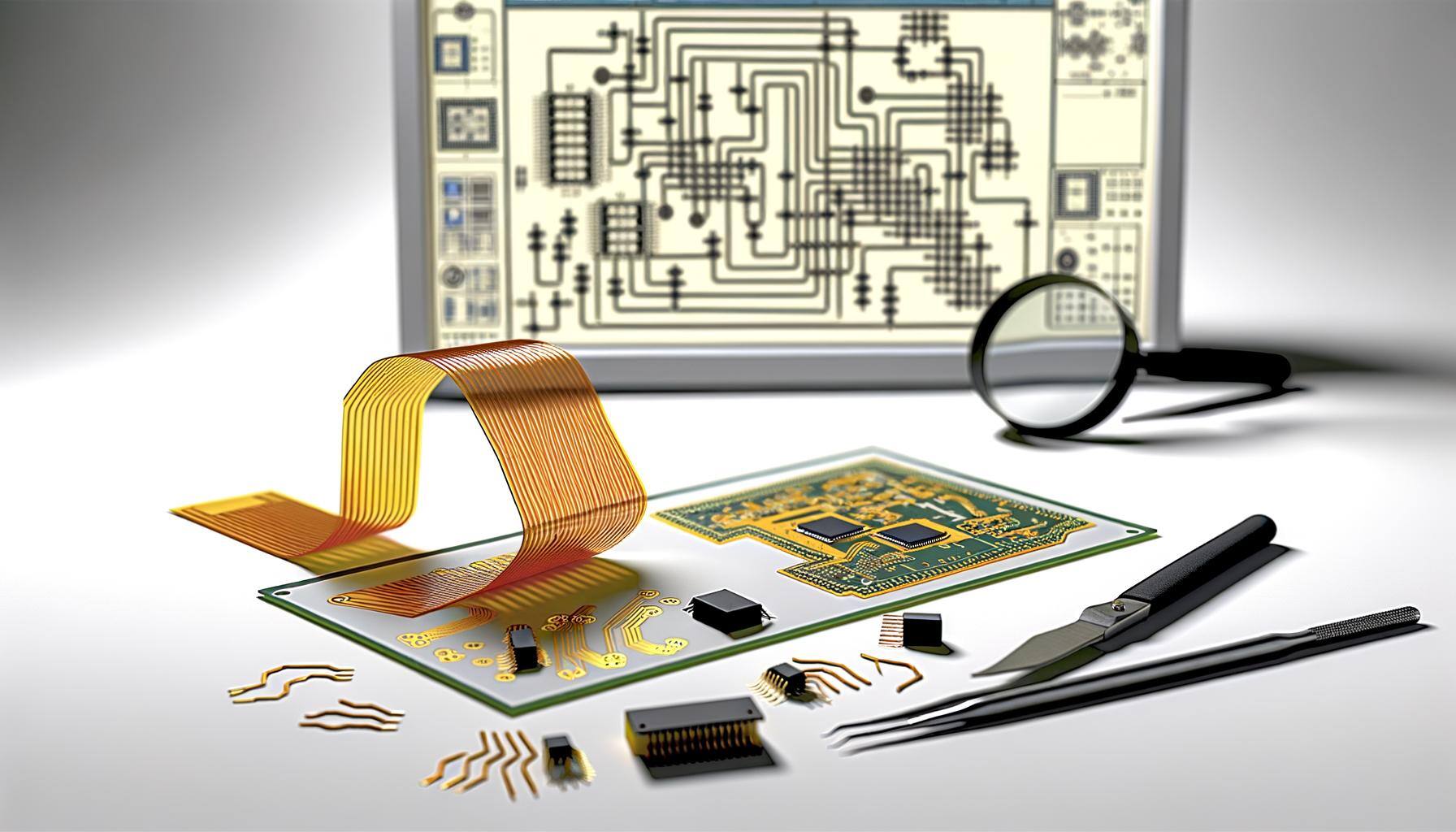

Navigating the Complexities of PCB Selection
In the dynamic world of electronics, the choice of the right printed circuit board (PCB) can significantly impact the success of your project. Flex and Rigid Flex PCBs have emerged as popular options, thanks to their unique ability to accommodate various design demands. However, selecting the appropriate type entails navigating a maze of technical considerations and application-specific requirements.
Flex PCBs are favored for their ability to bend and adapt to confined spaces, making them ideal for compact devices. On the other hand, Rigid Flex PCBs offer a hybrid solution that combines the benefits of both flexible and rigid boards, providing structural integrity and flexibility. The challenge lies in understanding the specific needs of your application to determine which type of PCB will deliver the best performance.
Production Challenges in Flex and Rigid Flex PCBs
Producing Flex and Rigid Flex PCBs comes with its own set of challenges. Flex PCBs require meticulous handling due to their delicate nature. The flexible materials used in their construction, such as polyimide, demand precise manufacturing processes to prevent damage during assembly. Ensuring the integrity of the circuitry during the bending and folding processes is crucial to maintain functionality.
Rigid Flex PCBs, while offering a blend of rigidity and flexibility, present a different kind of complexity. The integration of multiple layers of flexible substrates with rigid sections requires advanced manufacturing techniques and a deep understanding of material properties. This complexity often translates to longer production times and the need for specialized equipment, making the production process more intricate than that of traditional PCBs.
Cost Implications of Advanced PCB Technologies
Cost is a pivotal factor when selecting between Flex and Rigid Flex PCBs. Flex PCBs are generally more cost-effective, especially for applications that do not demand additional rigidity. Their simpler manufacturing process and the availability of materials contribute to lower production costs, making them an attractive option for projects with budget constraints.
Conversely, Rigid Flex PCBs, despite their higher cost, offer unparalleled design flexibility and durability. The sophisticated manufacturing process, which involves integrating rigid and flexible layers, incurs additional costs. However, the investment can be justified for high-stress applications where the reliability and performance of the PCB are paramount. Balancing the initial investment against the long-term benefits is crucial in making a cost-effective decision.
Application-Specific Considerations for PCB Use
Different applications impose unique requirements on PCB design. In consumer electronics, where devices are getting increasingly compact and lightweight, Flex PCBs are indispensable. Their ability to conform to tight spaces without compromising functionality makes them a staple in the design of smartphones, smartwatches, and other portable devices.
In contrast, Rigid Flex PCBs shine in high-stress environments such as aerospace, automotive, and military applications. These industries demand PCBs that can withstand extreme conditions while maintaining performance integrity. The hybrid design of Rigid Flex PCBs provides the necessary robustness and adaptability, making them a preferred choice for such demanding applications.
Balancing Flexibility and Durability in PCB Design
Achieving the right balance between flexibility and durability is a critical aspect of PCB design. Flex PCBs, while offering exceptional flexibility, must be designed to withstand mechanical stress without compromising the circuitry. This requires careful consideration of material selection and design layout to ensure reliability.
Rigid Flex PCBs, with their combination of flexible and rigid layers, offer a solution where both flexibility and durability are essential. The challenge lies in optimizing the design to leverage the strengths of each component. This involves strategic placement of rigid sections to provide structural support while allowing flexible parts to enable design versatility.
Future Trends and Innovations in PCB Technology
The future of Flex and Rigid Flex PCBs is promising, driven by innovations in materials science and manufacturing techniques. Advances in materials are leading to more resilient and durable substrates, enhancing the performance and lifespan of these PCBs. This is particularly relevant as the trend towards miniaturization in electronic devices continues to grow.
Emerging manufacturing technologies, such as additive manufacturing and 3D printing, are set to revolutionize PCB design. These techniques allow for more complex and customized solutions, catering to the demand for efficient and compact electronic devices. As the electronics industry evolves, Flex and Rigid Flex PCBs are poised to play a pivotal role in shaping the future landscape of electronic design and application.
In conclusion, while Flex and Rigid Flex PCBs offer remarkable advantages, selecting and utilizing them requires careful consideration of the challenges and complexities involved. By understanding the specific needs of your application, production challenges, and cost implications, you can make informed decisions to optimize your PCB design and achieve the desired performance outcomes.